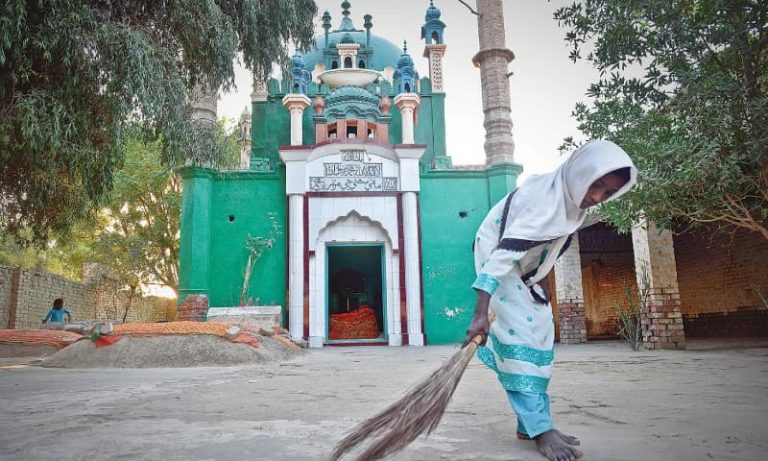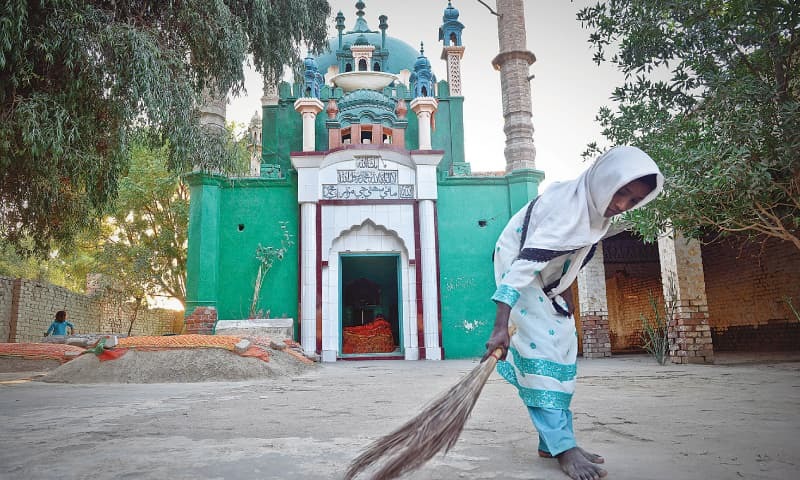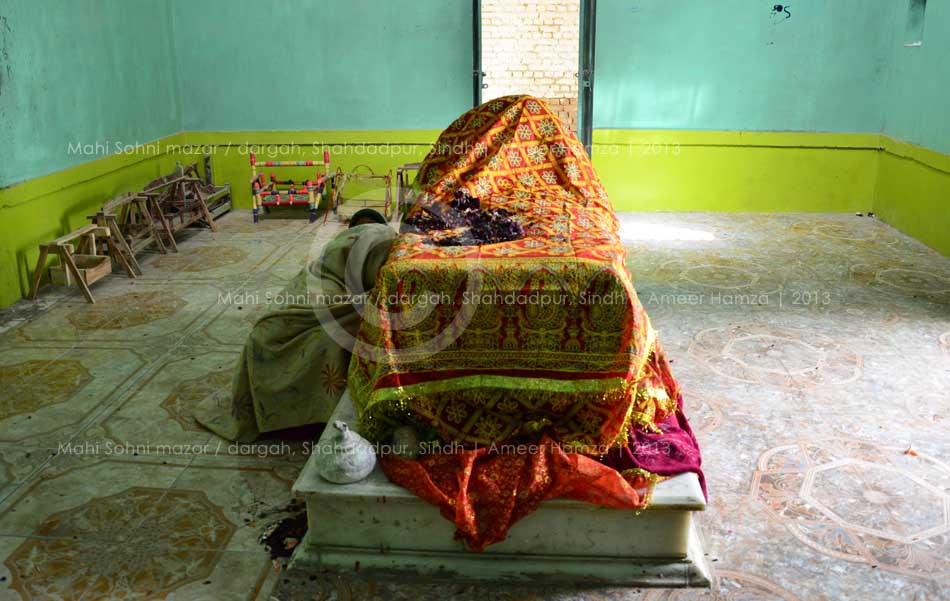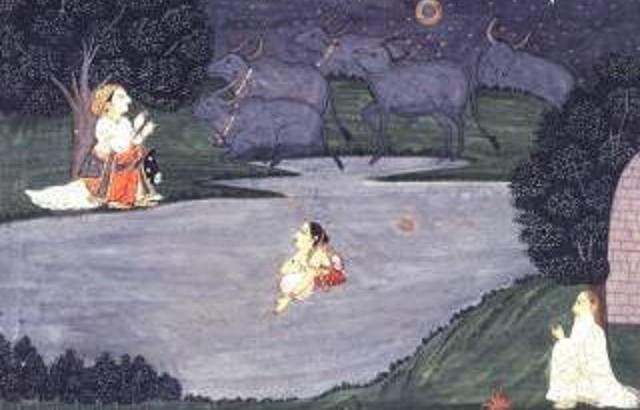

Shah Abdul Latif Bhittai has presented Sohni as fearless character that beholds with un-frightened eyes to all of the horrors and terrors of river. Sohni is too brave to be afraid of the waves and whims of the river. Love is the mainspring to her bravery.
By Noor Ahmed Janjhi
Classical Sindhi poetry offers a comprehensive and compact thought focusing on human behavior in the vast context of nature. Khalifo Nabi Bakhsh has been a great Sindhi poet of the classical heritage. His poetry contains not only beautiful ideas and wise thoughts but also provides a judicious style, tone and tenor. The linguistic scheme in his poetry is a great example of poetic craft and creativity. He has followed the footprints of his predecessor poets and has done some additions. He has composed his poetry in Surs and further tagged it with fasl. His poetic compendium ‘Khalifay sahib jo Kalam’ consists of 29 Surs and a chapter is of miscellanea. It is compiled, researched and edited by Dr. Nabi Bakhsh Khan Baloch. Surs are: Kalyan, Khanbhat, Surirag, Samondi, Todi, Saring, Kedaro, Sassui, Sorath, Berag Hindi, Joga, Jhanglo, Barvo Sindhi, Rano, Khahori, Ramkali, Ripa, Leelan Chanesar, Bilawal, Dahar, Kapaiti, Ghatoo, Dholo Maru, Marui, Dhanasri, Poorab, Aasa, Karayal, and Kamoda. Miscellanea contain poetry on tassawuf in Sindhi, Hindhi and Seraiki. It contains Bhajan and Rasoora. By accommodating the genres of Bhajan and Rasoora, the poet has established a great example of interfaith connectivity and interaction. Tolerance has remained an important characteristic of Sindhi society. It has always been disturbed by forces of prejudice and power but the majority has resisted the negative forces and maintained the peaceful coexistence in the society.

Shah Abdul Latif Bhittai has composed the story of Sohni Mehar under the title of of Sohni but Khalifo Nabi Bakhsh has kept its topic ‘Toddi’, the real name of Sohni. He has presented the character of Sohni as fearless character that beholds with un-frightened eyes to all of the horrors and terrors of river. Sohni is too brave to be afraid of the waves and whims of the river. Love is the mainspring to her bravery. The Sur consists of three fasl accommodating 10 bait and four waaies.
Firstly, Sohni steps into water without any means. She has the great trust in blessings of Allah. She does not take ‘tunbo’, ‘turho’ and ‘seenah’. All of these are the means to swim through water. She is not depending on ‘madd’. She does the entire venture with her great confidence in the blessings of God. She throws herself for sake of God.
نڪو تنبو نڪو تُرهو، نڪا سيڻهه ساڻ
پاڻيءَ وجهي پاڻ ، الله سندي آسري
(She neither takes ‘tunbo’, ‘turho’ , nor takes along ‘seenah’. She throws herself into water trusting firmly in Allah)
نڪوٻڌي ترهو ، نڪو ٻڌي نوڙ
پاڻي پنيءَ ٻوڙ، سهڻي ليکي سير ۾
(She neither binds ‘turho’ nor twists with ropes. She thinks the deepest water as of knee deep water)
Second fasl elaborates relation of Sohni and Dama. The poet advises her not to spend days with Dama and not to be familiar and free with her mother in law. He also urges not to forget the discussion about neighboring people. The poet discourages the role of Dama and appreciates the role of Saharr. He also extends the ideas further. He hopes for crossing over safely.
ڏم سان گهار م ڏينهن ، سس سان ڀِرُ م سهڻي
پاڙيچن پچار، مڇڻ مُنڌ وساريين
(Don’t spend days with Dama, don’t be free and familiar with mother in law, O Sohni. Don’t forget discussion about the neighboring fellows)
ڏم ڏٻرو هو ، ساهڙ سدائين سنرو
ٻُڏندي ٻانهيارين جو ساڻي ٿيندو سو
قاسم غم نه ڪو ، آڳهه احمد جن جو
(Dama is always vulnerable and Saharr is always victorious. He shall be support for the drowning girls. Qasim has no pain as Ahmed (SAW) is guiding ahead.)
Concluding the sur, the poet shows absorption of both the lover (Sohni) and beloved (Saharr). He declares the earthen pitcher as a great obstacle on way towards absorption. By breaking of the pitcher, the duality fades away and unity is crystalized clearly. The poet narrates it beautifully as:
سهڻي ساهڙ پاڻ ۾ ، هڪا هڪ ٿيا
گهڙو ڀڳو تان گهوريو ، وچان وچ ويا
ٻيائيءَ منجهه ٻيا، هو ويا وحدت گڏجي
(Sohni and Saharr merged and became one. Pitcher may be broken but the obstacles went away. Others are in duality, they were mixed with oneness)

All of the four waies of the sur narrate same thesis but in different tone. Sohni narrates the vastness and depth of seas before her. She declares herself a determined person without any means against all of the dangers of marine animals. She does not want to spend days with Dama and wants to sacrifice the pitcher against the moment of time. She sacrifices herself too. In the last waaie, the poet reminds the commitment of ‘qaloo bala’. All of the lines follow the thought and touch different aspects of life and death.
Khalifo Nabi Bakhsh Qasim has tried to explain different aspects of human life ranging from the pledge on the day of creation to the taste of death. He discusses fate and fortune in a way to elaborate planned scheme of universe. He explains different concepts through the theory of means by quoting ‘tunbo’, ‘turho’, ‘seenah’, ‘madd’,’ ‘rope’ and other means of swimming. It is a routine and usual process to cross through the sea. However, a different mode of swimming is to swim without any of the means. In this way, the self becomes the means itself. Sacrifice has played a great role in the journey of human life. The poet describes the commitment made on the eve of creation. He thinks Sohni and Saharr are one. The earthen pitcher is an obstacle on the way towards merger.
 The poet uses symbolism while narrating the very concepts of human intellectual development. The types of boats and other means of swimming are symbols to narrate worldly supports and dependencies. The earthen pitcher symbolizes human body. The terms of ‘qaloo bala’, ‘kul nafsin zaiqat ul moat’ and ‘likhyo loah qalam mein’ are key terms used by the poet. By mentioning these key terms, the poet wants to narrate holistically the journey of human life. Todi is also symbol for the seeker who is in search of the lost way towards Beloved.
The poet uses symbolism while narrating the very concepts of human intellectual development. The types of boats and other means of swimming are symbols to narrate worldly supports and dependencies. The earthen pitcher symbolizes human body. The terms of ‘qaloo bala’, ‘kul nafsin zaiqat ul moat’ and ‘likhyo loah qalam mein’ are key terms used by the poet. By mentioning these key terms, the poet wants to narrate holistically the journey of human life. Todi is also symbol for the seeker who is in search of the lost way towards Beloved.
By and large, the poet conveys the message in form of pleasant words, phrases and idiomatic expressions presenting a good example of linguistic aestheticism.
_________________
About the Author
